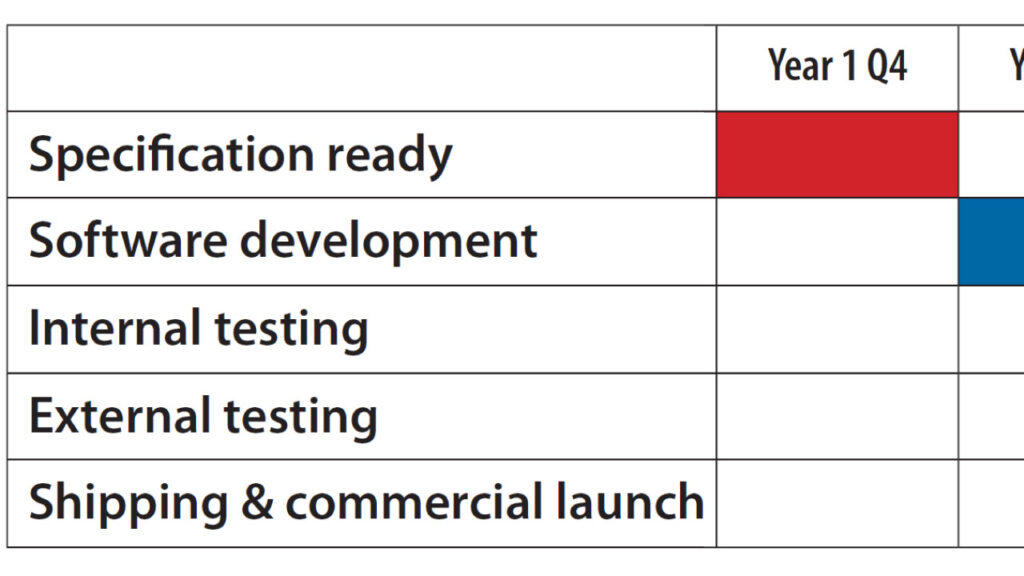
TV makers to SDOs and regulators: we cannot rush changes
John Moulding
With a promise of anonymity, three TV manufacturers provided me with a picture of their work cycles, along with messages about their readiness to embrace rapid innovation, tempered by the need for standards developing organizations (SDOs) to complete specifications in good time and for regulators to understand why changes cannot be hurried.
Their timelines confirmed that software and technical specs should be nailed down by Q4 of what we are going to call Year 1 of the cycle – where Year 2 is the calendar year when most software development and testing occurs, and Year 3 is when television sets reach consumers. Y1/Q4 is the crunch quarter when the TV manufacturer ships prepare to sail.

The timelines here relate to software specs and development. Hardware changes push the schedule forward six months (and may require silicon work starting two years before).
Test schedules
My contributors warned that timelines can vary by year, market and model (and could change in future) but taking this important caveat onboard it is still clear that most software development is performed in Q1-Q3 of Year 2, most internal testing falls in Q3-Q4 of Y2, and most external testing happens from Q3/Y2 to Q1/Y3. Commercial release ranges from Q1-Q2 in Y3.
Manufacturer One (M1) stated that software development must be essentially complete by August/ September in Year 2. Working backwards, this requires software development to start (usually) in Q1/ Y2, “at which point the specs must be complete”. October of Y1 is the preferred month for completed specs for this company.
For this maker, internal QA (quality assurance) starts no later than Q3/Y2 and is completed by the end of that year. External testing starts from Q3/Y2 but no later than Q4/Y2, and completes in Q1/Y3.
Manufacturer Two confirmed a typical timeline of:
- Q4/Y1: specifications needed.
- Q1/Y2: software implementation begins (no firm end date offered, as it can vary per specification).
- Q1/Y2: test materials needed; internal tests begin and continue into Q2, but no firm end date offered as it varies by spec.
- Q2/Y2: external testing begins and continues into Q3 (again, the end point could vary).
- Q1/Y3: commercial product launch. Manufacturer Three confirmed the need for spec confirmations in Q4/ Y1, with the first half of Y2 focused on development and the second half focused on testing/QA.
There was a view that manufacturers should not appear overly cautious and that they are ready to work quickly with key service launches, but M1 nevertheless stressed the unusual complexity of developing television sets (vs other product categories), citing high-level regional variations (like DVB vs ATSC) down to low-level differences like subtitle formats.
Regulatory demands
M1 said of the software cycle: “It demonstrates why manufacturers find it very difficult to react to new requirements that must be implemented within six months, as we are frequently asked to do. This doesn’t only apply to traditional SDO work. It applies to regulators requiring fast implementations – especially if they make a demand in the cycle when there is no software development team working on new live development.”
M3 had a specific request to anyone encountering discussions involving TV manufacturers at DVB meetings. “Keep in mind that there is a diverse group of businesses, of varying scales, all navigating intricate product development timelines.
“It may seem convenient to view contemporary smart TVs through the lens of computers, assuming that incorporating new DVB functions merely requires updating some software. We should remain aware that TV manufacturer colleagues bear a direct responsibility for the consumer experience of DVB products and services, and this brings with it the need to apply appropriate QA before each new product launch.”
—
This article first appeared in Issue 65 of DVB Scene magazine.
John Moulding has reported on the technology and strategy evolution of television since 1999 and was Editor-in-Chief at Videonet for 13 years. He has written the agendas for Connected TV World Summit and the Future of TV Advertising Global since 2010.
